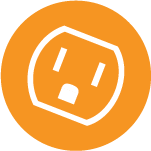Why Are Home Inspections Important?
As a contractor, there will be times when a client needs you to examine their residential property. This examination may include checking major systems, property conditions, or safety issues.
Helping your client is not just a perfect opportunity to give your client peace of mind. It is also a chance to provide onsite service.
Why Home Inspections are Important
A home inspection is an analysis of the condition of the home. Home inspections are done both visually and through tests to analyze the function of the major components and systems in a home. While home inspection requirements change by state, they all cover the major structural deficiencies.
Potential buyers of a property need to schedule a home inspector once the home is under contract. The buyer's real estate agent can also facilitate this process. Home inspection cost vary depending on the amount of square footage. Meaning, bigger home, higher inspection costs.
While home inspections are typically done by certified home inspectors, the inspection can also be done by licensed contractors. A licensed contractor can use their field expertise to diagnose problems or complete simple maintenance onsite.
Upon completion, the home inspection report notes potential problems in the home. The report should include recommendations on which items need repair or replacement.
Can Contractors Do All Types of Home Inspections?
Before doing an inspection, it is important to understand which home inspection the client is asking for. The client could either be asking for a standard home inspection or a specialized inspection.
A standard home inspection is the more common professional home inspection for contractors because it can fall within their licensing and expertise. During this inspection, the contractor can inspect the interior and exterior of the house. This includes the structural components of the home as well as the electrical appliances. During this inspection you do not need to look in the walls or behind electrical panels.
The other inspection is a specialized inspection. This inspection is for removing issues like mold, pests, and sewer lines. Standard home inspections do not cover the following:
- Pests/Infestations
- Pools
- Venting Equipment
- Household appliance
- Radon Gas
- Lead & Mold Testing
- Behind Walls & Under Floors
- Sewage Lining/Systems
To inspect and resolve the above issues, contact a certified specialist. Home inspectors only provide visible inspection of accessible structures and components, deeper dives require expertise.
For example, a certified technician can perform an HVAC system inspection. Certified technicians can do a visual check, performance test, parts check, and safety check. This helps them determine how healthy an HVAC system is.
What to look for during the Inspection?
When your client hires you to do a property inspection, it is important to know what to look for. Use a home inspection checklist to document your finding and guide you through the process. Some of the main inspection areas that should be at the top of your home inspection list are the following:
- Foundation
- Roof
- Plumbing
- Electrical Systems
- HVAC System
Foundation
The foundation is the most important part of a client’s house. The foundation supports the home’s structure going upward to the roof. If the foundation is cracked or split, the house could eventually collapse.
When inspecting the foundation, walk around the house checking for settlement issues, cracks, or sloping. If any of these are observed, mention it on the checklist to inform the client so they know what needs to be fixed.
Roof
Roofs are another part of the home that needs to be inspected. Check the quality of the roof and the performance of it as well. You can inspect the roof by either climbing on it for a closer look or viewing it from a ladder.
Either way, check for any visible damage on the roof. Also, look for any code or ordinance violations, then suggest repairs in your report.
Plumbing
As a homeowner, dealing with water and plumbing issues can be a very costly expense. To curb this expense for them, it is best to check anything that can cause water flow.
For example, check the pipes, showers, bathtubs, and toilets. Check these items for leaks, cracks, or any other issues. It is also important to look at the walls, floors, and ceilings, to check for water damage. If there is any damage, depending on the size, the client might have to do immediate repairs.
Electrical Systems
When neglected, electrical systems can cause house fires and other life-threatening problems. To prevent these issues from occurring, it is best to inspect the systems as well.
Inspect potential corroded wires and correct amperages for the wires. You should also check switches and receptacles to ensure they are working properly. Mark down potential hazards and make suggestions on next steps.
HVAC System
Inspecting the HVAC system of a home is also very important. This helps to see if the heating, cooling, and ventilation work in the home properly. You should turn on the air conditioner during the entirety of the inspection.
Common Misconceptions about Home Inspections
Whether standard or specialized, home inspections cover many areas of the home. However, there are many misconceptions about what a home inspection is. One main misconception is that home inspections tell the value of the home. To find the value of the home, a client needs a home appraisal, not a home inspection.
Anther misconception is that the inspection covers landscaping, appliances, wells and areas behind wall cavities. Unfortunately, if you want to cover the performance of these options, you need a relevant specialist.
In Summary
Home inspections help contractors spot safety and maintenance issues, giving clients peace of mind and opening doors for extra services. While licensed contractors can handle standard visual checks, specialized areas like mold or HVAC require certified pros.
Receive special deals and more, right to your inbox
Receive special deals and more, right to your inbox
